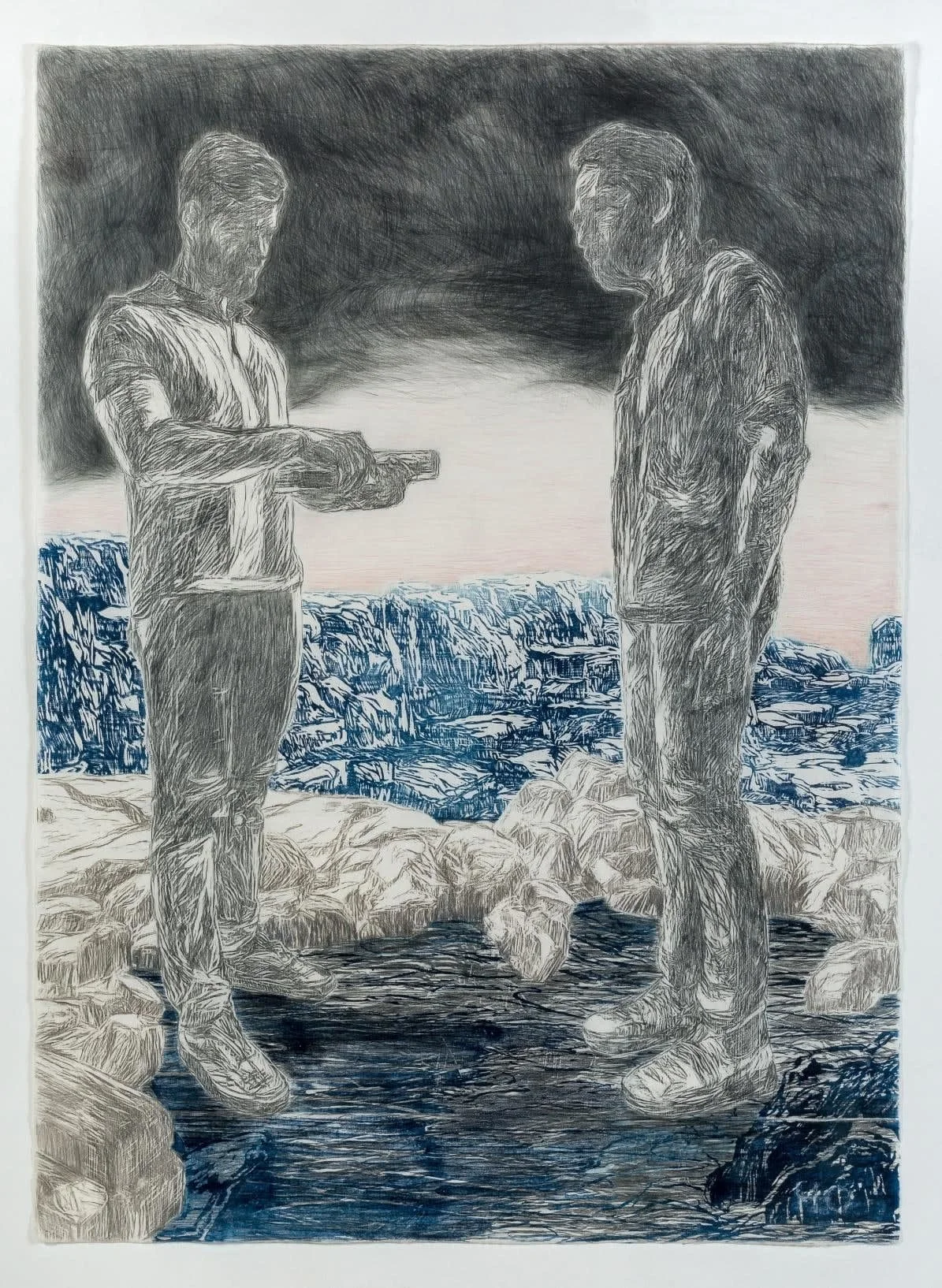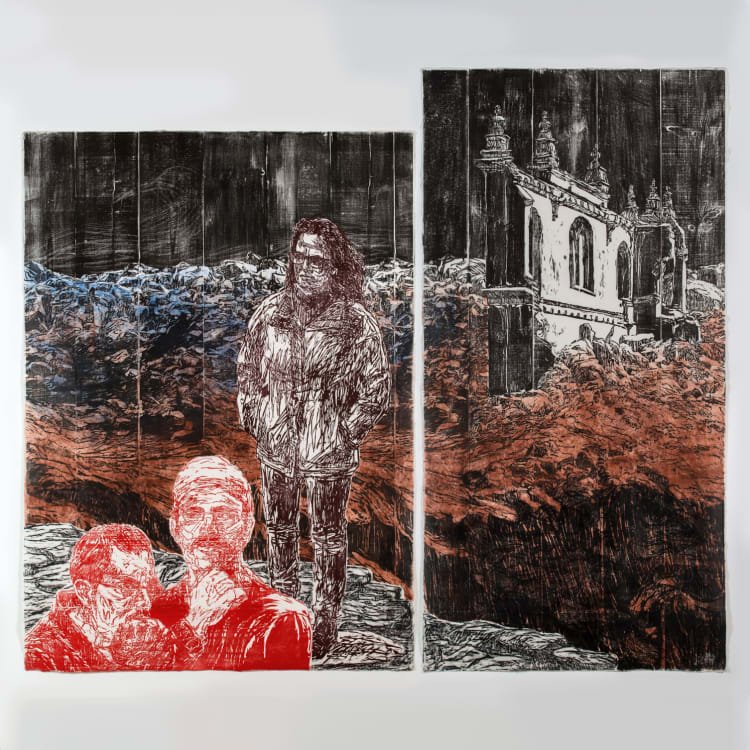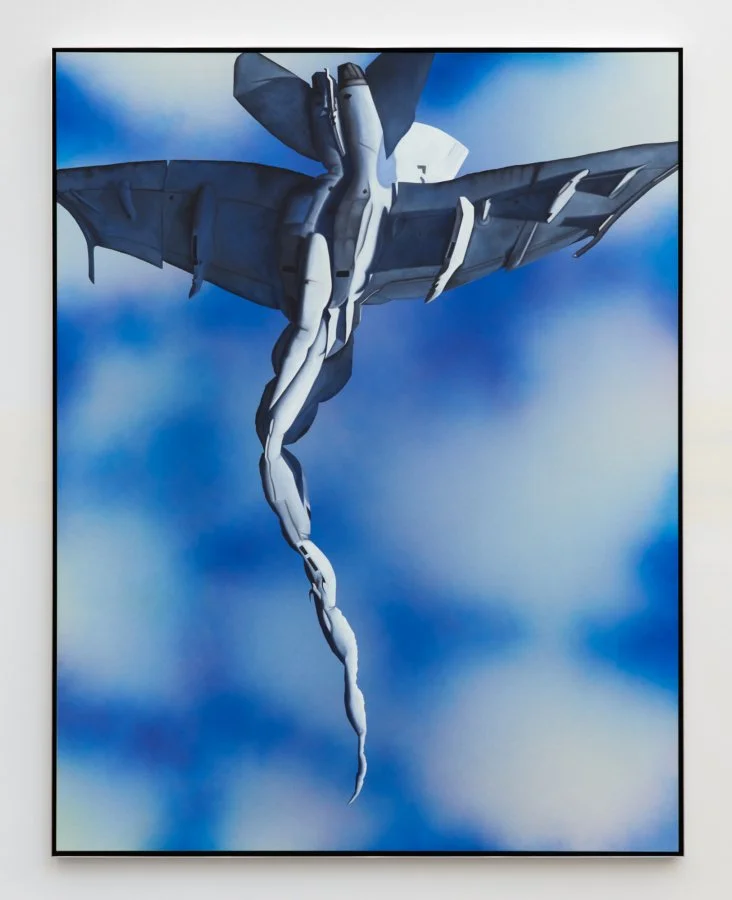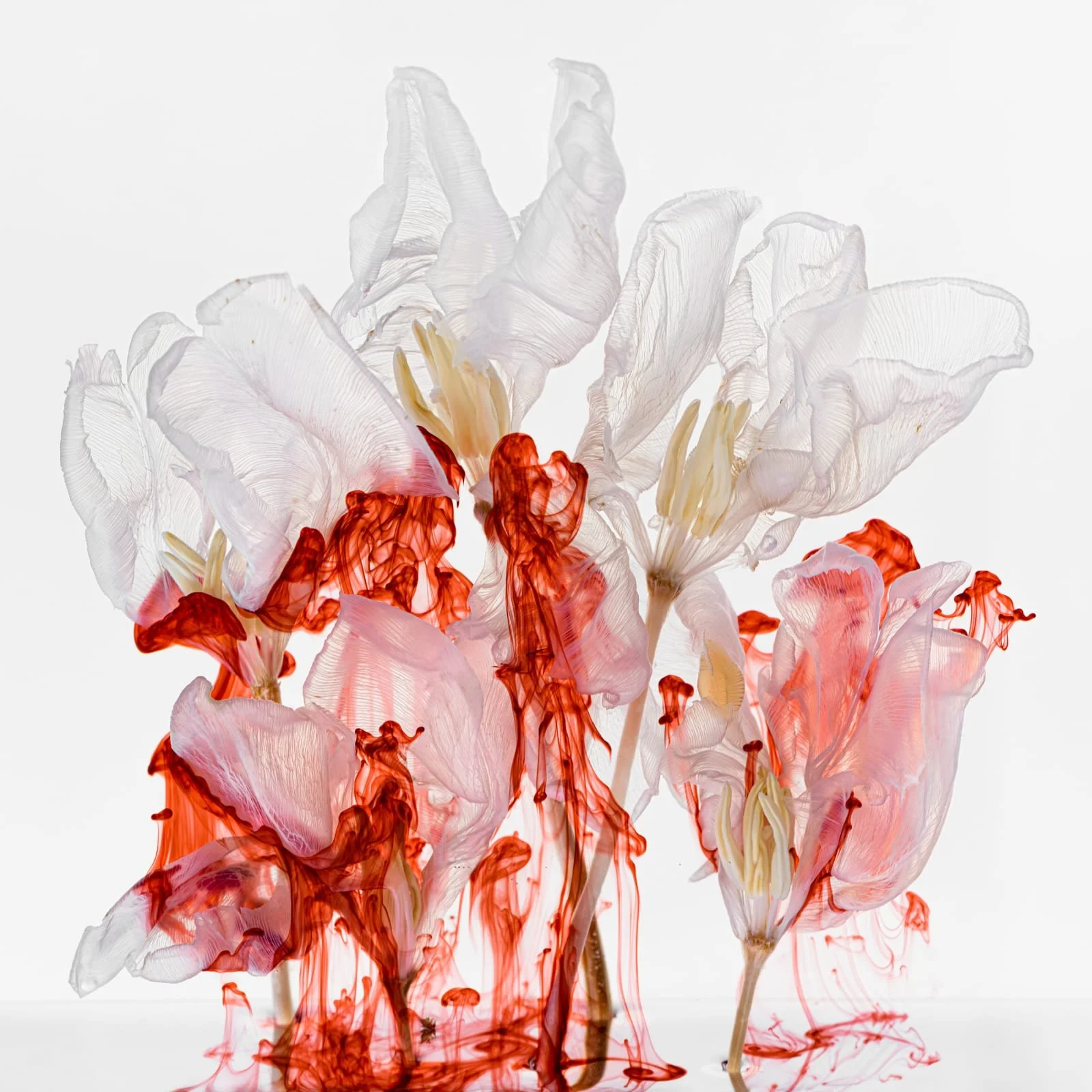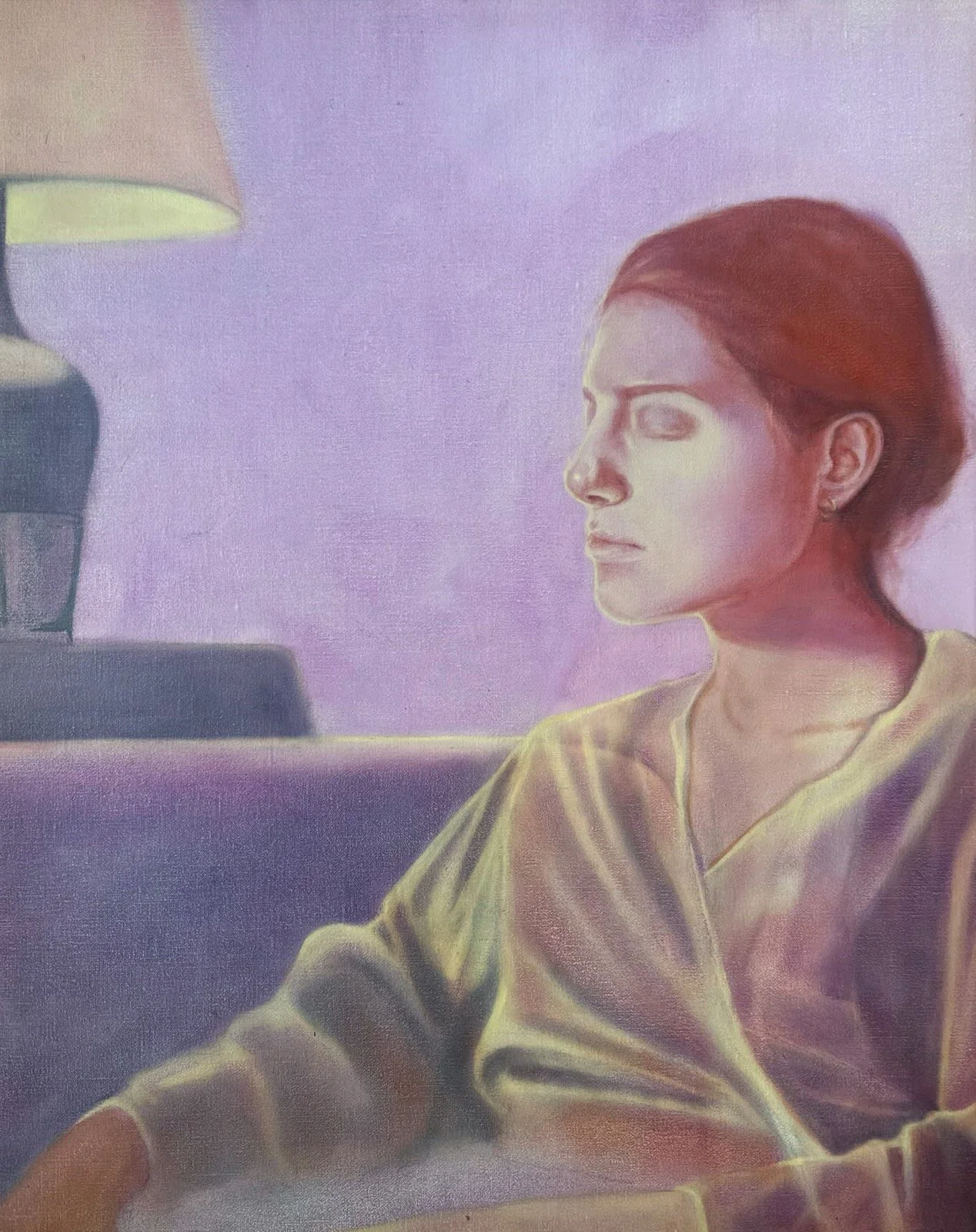Orit Hofshi
“Nebulous”
New York, 245 Tenth Avenue
Orit Hofshi creates her monumental works through a laborious combination of mediums, taking a purist, traditional approach to each. Hofshi’s works on paper are often immersive in size, verging on the scale of installation. In the studio, the artist begins by drawing directly onto pinewood panels, which she herself then carves with hand tools. Hofshi engages in a deeply physical dialogue with pinewood through this process, forming a collaboration with the natural qualities of her materials. The artist prints these woodcuts by hand, rubbing the back of large sheets of handmade paper with a wooden spoon, forgoing the use of presses or assistants. This solitary and labor-intensive process exists as a performative extension of the works themselves.
Enlightenment, 2020 Hand Printed Woodcut, Rubbing and Ink on Handmade Kozo & Abaca Paper Left Element: 71 1/2" x 52" (181.5 x 132 cm) Right Element: 79 1/4" x 40 1/4" (201.5 x 102 cm) Overall: 79 1/4" x 92 1/4" (201.5 x 234.5 cm)
Hofshi’s methodologies encompass not only this distillation of traditional printing technique, but expansions on it. The artist shifts strategies of transferring ink from each woodblock, moving between printing, rubbing, and offsetting, often working in bold, saturated colors. Hofshi also adds drawn elements, incorporating layered movement and texture. These differing techniques play into a sense of alienation and displacement of the complex relationships within and between humankind and the natural world. Her frequent depiction of solitary figures draws on the artist’s philosophy that humanity must overcome adversity, and that growth only comes through reflecting upon one’s own held values, while facing the consequences of their decisions and actions as individuals and as part of society.
Hofshi has maintained a "library" of her carved wood blocks since early on in her career — one that she continually revisits in the creation of new work. The artist deploys recurring imagery of people, structures, and natural landscapes, reconfiguring them into an elliptical, nonlinear narrative in which the drama of the human condition plays out in the open. One particular recurring figure is a self-portrait of the artist, an avatar by which she locates herself within her work’s ongoing allegorical struggle. Hofshi’s own likeness makes clear that these reappearing forms are not just a pictorial strategy, but an existential situation. This replication of imagery throughout the artist’s oeuvre forms a dreamlike logic: a language of symbols that form cycles in an inescapable space, representative of a seemingly endless universal psychic state.
These large-scale works on paper relate natural phenomena with mass social and political events. Drawing from the artist’s experiences witnessing conflict in the Middle East and across the world; the lasting effects of the Holocaust; and crises across history, Hofshi cautiously populates her compositions with expressive subjects engrossed in mysterious yet urgent activity. Mired in uncertainty, they are caught between searching, finding, and intently looking on. She situates these figures in imagined landscapes that are seemingly forever devastated, yet dotted with evidence of former human life.

